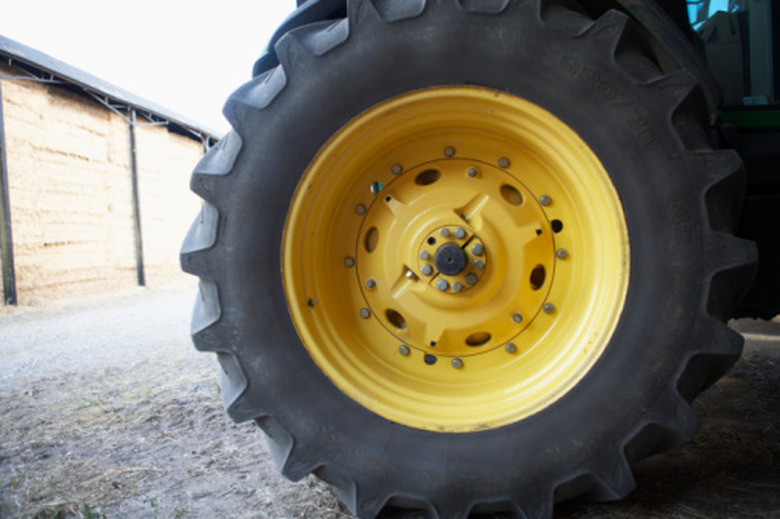How To Fill A Tractor Tire
Things Needed
- Tire pressure checking gauge
- Air compressor
Tractor tires require a specified amount of air pressure to be maintained at all times for proper operation of the machines. This air pressure is measured in pounds per square inch, or PSI. The required PSI is imprinted into the rubber of the tires near the bead, where the tire meets the metal rim of the wheel. The imprinted information may list a minimum acceptable operating pressure and a maximum (recommended) tire pressure. The air pressure should be maintained according to this information.
Step 1
Remove the valve stem cap from the tire valve. Press the round end of a tire pressure gauge firmly down onto the nozzle. Read the gauge and make note of the current tire pressure indicated, in PSI.
Step 2
Read the minimum/maximum tire pressure information imprinted on the tire. Compare the printed tractor tire information with the current tire pressure reading obtained from the tire gauge.
Step 3
Start the air compressor. Allow it to build maximum tank pressure, at which time the compressor motor will automatically turn off. Press the compressor fill valve firmly over the valve stem nozzle of the tractor tire. Let air enter the tire for 10 to 15 seconds. Remove the compressor fill valve from the tire's valve stem nozzle. Test the tractor tire's air pressure again with the air pressure gauge. Fill the tire with air in cycles of 10 to 15 seconds until the tractor tire pressure falls between the recommended operating tire pressure.
Step 4
Remove the air compressor nozzle from the tractor tire valve stem when the compressor motor kicks on. This allows the compressor to reach full pressure again before continuing to fill the tire to the necessary pressure.
TL;DR (Too Long; Didn't Read)
Don't fill a tractor tire to its maximum rated tire pressure if the tractor will be used on hot summer days. The high heat of the soil being worked with the tractor can cause the internal tire air pressure to expand. If the tire is filled to maximum, the tire may rupture. During summer months, keep the tractor tire pressure about 10 PSI below the maximum to allow room for air to expand. In the winter, keep the tire filled to maximum, because internal air tends to contract in cold weather, risking underfilled tires and damage.
Cite This Article
MLA
Schanaman, Kurt. "How To Fill A Tractor Tire" sciencing.com, https://www.sciencing.com/how-7434122-fill-tractor-tire/. 7 August 2017.
APA
Schanaman, Kurt. (2017, August 7). How To Fill A Tractor Tire. sciencing.com. Retrieved from https://www.sciencing.com/how-7434122-fill-tractor-tire/
Chicago
Schanaman, Kurt. How To Fill A Tractor Tire last modified March 24, 2022. https://www.sciencing.com/how-7434122-fill-tractor-tire/
